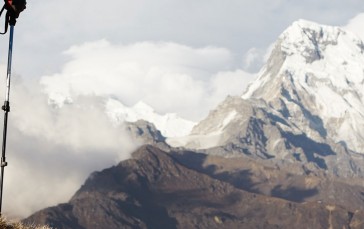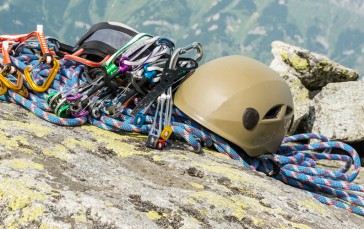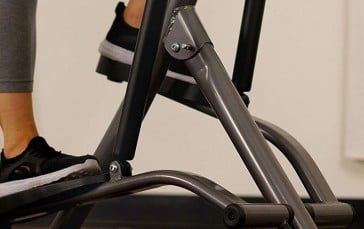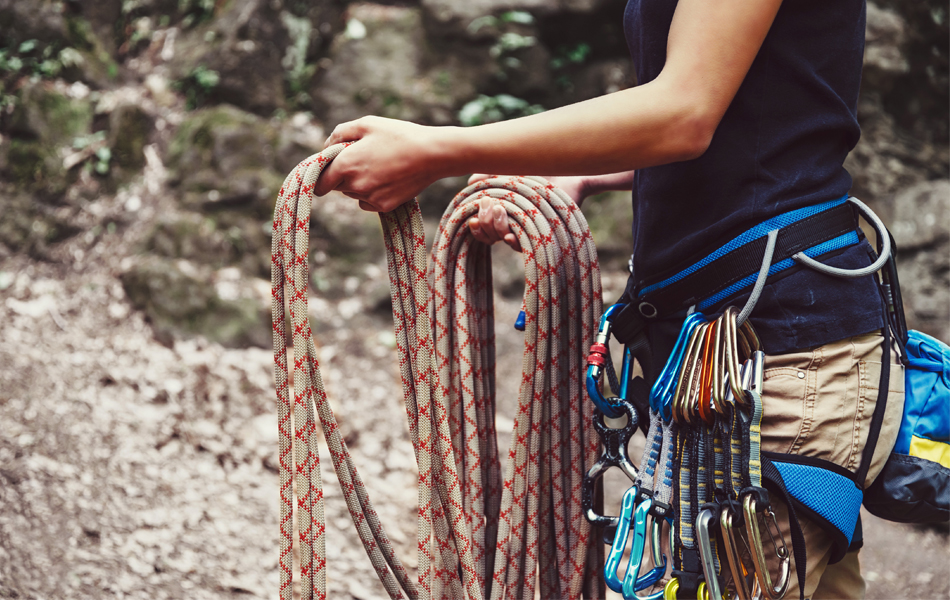Best Climbing Ropes in 2022
For anyone not named Alex Honnold your climbing rope will be your saving grace. Whether climbing alone or in tandem, it is your rope that keeps you safe and keeps the ground at bay. Having a great climbing rope allows you to relax and concentrate on the next placement which in turn minimizes the odds that you’ll ever need the rope. So the relationship between climber and rope is both physical and psychological and for those reasons it’s crucial that you have a rope that is both appropriate and dependable. Below are the best climbing ropes of 2019.
The Best Climbing Rope
1GM CLIMBING 8mm Climbing Rope

This climbing rope from GM Climbing features durable 8mm double-braid, polyester construction which makes is a great tool to have in your bag when you hit that vertical pitch on the mountain. The braided inner core is tight and tough and sheathed in an outer layer that provides first class abrasion resistance. This rope feels great in your hand. Not gnarly and abrasive like many inexpensive ropes. It’s highly resistant to moisture with low elongation meaning you could use it in a rescue situation if you had to. If you’re looking for a high quality rope that’s durable, light and easy on your hands the GM Climbing 8mm Double Braid is a good choice. If you are a passionate climber, check our our guide to the best carabiner as well.
Double braid construction
Highly resistant to abrasion and water
Low static elongation
High tensile strength
Perfect for knots, lanyards and more
- BrandGM CLIMBING
- Weight4200lb
2Ingenuity Outdoor Static Rock Climbing Rope

The Ingenuity Outdoor Climbing Rope is ideal for installing fixed lines, rappelling, hauling climbing gear up to the start of the next pitch and lowering an injured climber to safety. The outer skin is wear resistant without being overly abrasive and the inner core is tough and dependable. The rope has loop hooks sewn into each end which can save you a boatload of time when it comes to moving equipment up and down the ice or rock face and simplifies rescue work. There’s an upper load limit of 300 kg and even the longer versions coil up nice and tight and tuck away easily in your pack. Don’t forget to also wear a reliable climbing helmet for this kind of adventure.
13 cord inner core
Built in stainless steel thimbles
5.2% static elongation
64’ length weighs less than 3 lbs
Ideal for fixed lines/rappelling
- BrandIngenuity
3Aoneky 10 mm Static Outdoor Climbing Rope

The Aoneky 10mm rope is fabricated from tough, durable nylon and its low static elongation makes it ideal for top roping, fix lines, rescue work and portage. At 10mm the rope is thick enough to allow you to get a nice firm grip and its high degree of water and mold resistance makes it a great choice for shorter ice pitches. Especially ones where you’re trying to maintain a tight and effective dynamic envelope. While it touts itself as an outdoor rope we could easily see this being used on an indoor rock wall where minimal elongation is important. Comfortable and reliable with built-in eyes at each end the Aoneky 10mm Rock Climbing Rope is an excellent overall value. This also makes a perfect gift for rock climbers in your life.
Tear and rot resistant
1000 kg max load-bearing capacity
Durable, comfortable nylon construction
Ideal for top roping, fixed ropes and more
Extremely lightweight
- BrandAoneky
- Weight1.31 pounds
4Black Diamond 9.9 Rope

The Black Diamond 9.9 is one of the heavier ropes we tested but unless you’re trekking a couple of miles up the trail through heavy snow to get to the ice that’s not a problem. It’s rated for 6 falls, which is slightly better than average and there’s no doubt it’s going to be there for you should you lose your grip. It features a clear middle mark for rappelling and the low static elongation makes it a good choice for that as well. The nearly 10mm diameter means just about anyone can get a nice firm grip and the 60 meter length will make it your rope of choice for long pitches. If there’s a drawback it’s the lack of dry treatment. Which means it’s going to pick up some water. Make sure you also check our guide to the best bouldering crash pads.
60 meters in length, 9.9mm diameter
Middle mark indicator
Low to moderate elongation
Outstanding durability
Outdoor or indoor use
- BrandBlack Diamond
- ModelBlack Diamond
- Weight9.31 pounds
Climbing Rope Buying Guide/FAQs
The climbing ropes in this guide are chosen through a combination of real-world experience, interviews with veteran mountaineers, rock climbers, and ice climbers, and information provided by the manufacturers.
Features To Look For In Climbing Rope
- UIAA safety ratings - Safety ratings for climbing rope are determined by the Union Internationale des Associations d'Alpinisme or UIAA. The UIAA applies a series of different tests aimed at determining the number of falls a rope can withstand, its static elongation, dynamic elongation and impact force of the rope. Climbers can then use this information to determine if a rope will serve their particular needs.
- Fall rating - All single and half ropes (see below) must be able to withstand at least 5 falls as specified by the UIAA. Twin ropes must be capable of withstanding a minimum of 12 falls.
- Static elongation - Static or working elongation is the degree to which a dynamic rope will stretch when an 80 kg weight is attached to it. For single and twin ropes elongation should not exceed 10 percent of the overall rope length. While half ropes should not exceed 12 percent elongation.
- Dynamic elongation - This is the distance a particular rope will stretch during the first UIAA rated fall. While it may seem like more dynamic elongation is a good thing since it will reduce the shock associated with the rope maxing out, in reality too much elongation can be dangerous as it exposes a climber to the risk of slamming into a ledge or other object lower down the climb.
- Impact force - This is the amount of force the rope is subjected to during the first UIAA rated fall.
- Climbing rope diameter and length - The length and diameter of a rope greatly influence its weight and applicability to various tasks. As a general rule thinner rope is lighter which makes it easier to carry up the mountain or into the area where the ice fall or rock wall is located. However, thinner ropes are also typically less durable and can be trickier to handle. Thicker ropes by comparison are easier to manipulate because it's easier to get a decent grip on them, especially if your hands are cold. They also tend to be more durable and will survive a greater number of falls.
- Weight - Whenever you need to hike significant distances carrying a rope you're going to have to consider the weight of the rope. In most cases the weight of standard dynamic ropes is measured in grams per meter. As such it's easy to determine the weight of a rope by multiplying the grams per meter by the overall length. Weight for static ropes is often indicated by the weight per foot, which means calculating the total weight is a simple matter of multiplying weight per foot times total length.
- Features - Ropes today are sophisticated lifting and survival tools that exhibit an array of useful features including:
- Middle mark - Most contemporary climbing ropes have a mark on them that indicates the middle of the rope. This is essential knowledge if you wish to use the rope to rappel.
- Dry treatment - Dry treatment helps a rope resist absorbing water. This is important since when a rope becomes saturated it is less effective in a fall. Also, as ice climbers can tell you, the water absorbed by a cold wet rope will often freeze making the rope stiff and difficult to manipulate, not to mention significantly heavier as well.
- Bicoloring - Bicoloring is another way rope manufacturers indicate the halfway point of a rope. Many climbers prefer this two color treatment over the discreet middle mark because it gives the clearest, most unambiguous indication of where the halfway point of the rope is. Bicolor ropes typically cost a bit more but most climbers will agree that it's worth the financial stretch.
- End warning - Some (not all) ropes have a built in thread or black dye indicating that you are coming to the end of your rope, literally. This can be helpful because when people are rappelling they sometimes lose track of where they are relative to the rope.
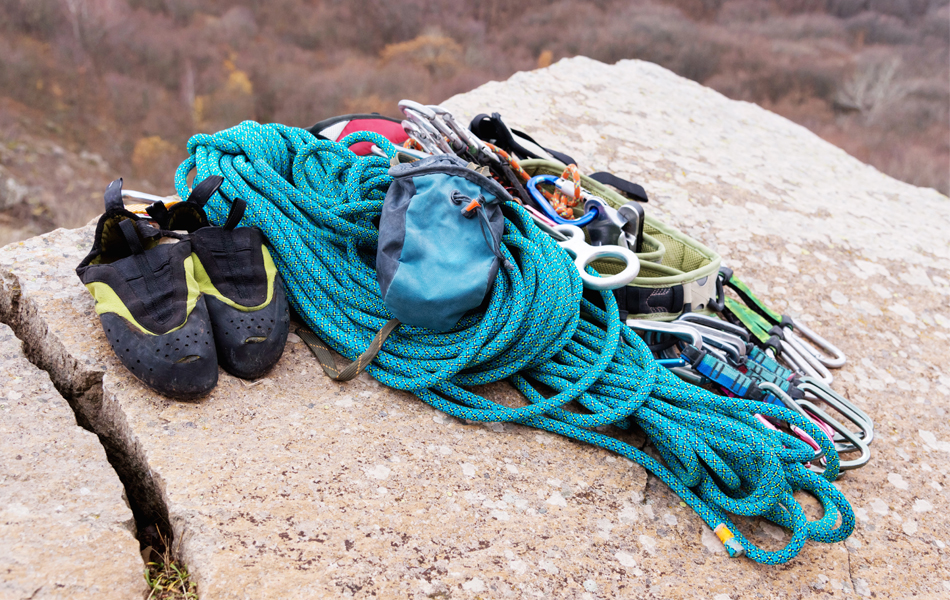
Types Of Climbing Rope
- Single Ropes - "Single" in this case indicates that a particular rope is designed and intended to be used by itself and not in tandem with other ropes in a system. The overwhelming majority of ropes purchased by climbers are single ropes and they can and are used for a variety of different climbs. Single ropes are typically indicated with a circled "1" at each end of the rope.
- Half ropes - Half ropes are intended to be one half of a two rope system. This type of belaying system is most often indicated for wandering rock and ice routes that require multiple pitches. The half rope system tends to reduce drag on the rope. In addition there are practical advantages of using two ropes as well. For instance, you can tie the two ropes together to execute a long rappel. Also, should one rope break you have a backup in place. The half rope system does, however, call for a higher level of technical ability and of course two ropes are heavier than one.
- Twin ropes - Twin ropes are best for long rock and ice routes that tend to be more or less direct, non-wandering, ascents. This is another two rope system. The difference being that with twin ropes both are always fed through each piece of protection. Because of this there is going to be more rope drag, which is why this system is recommended only for non-wandering routes. The advantages of the twin rope system are the same as the half rope system: longer potential rapels and built in redundancy should one rope break. Twin ropes tend to be light too so the combined weight is typically not as great as that of two half ropes.
- Static ropes - Static ropes will have very little to no stretch in them which makes them ideal for rescue work, fixed lines, caving or any other application where you don't want the elasticity of the rope to interfere with the task at hand; such as when you're hauling up a load or lowering a climber who has been injured.
Climbing Rope FAQ
Q: What are climbing ropes used for?
A: Ropes are vital mountain climbing equipment and serve three primary functions. The first being to save you in the event of a fall. The second being to allow you to haul climbing gear up or down a steep surface or lower an injured climber down that surface. And the third being to enable you to safely and quickly rappel down a steep surface. All other applications are of secondary concern.
Q: What length of rope do I need when climbing?
A: The length of the rope you need will be dependent on the length of the climb and its characteristics. Because of the limited height of indoor climbing walls most ropes for this purpose don't need to be longer than about 30 meters. Perhaps 40. Outdoor routes however can be considerably longer. In most cases you're going to want at least 50 meters of rope and in many cases more. The last thing you want is to be left short by your rappelling rope. As a general rule, 50 meter ropes will suffice for most rock routes, unless of course you're tackling El Capitan. Even so it's always a good idea to have a little more rope than you think you're going to need. Just in case.
Q: How do you wash a climbing rope?
A: Washing a climbing rope should be done either once a year or anytime the rope is particularly dirty. Here's how you do it:
- Fill a tub with warm (not hot) water.
- Add a bit of rope cleaner (there are a number of different ones available on the Internet or at your favorite outdoor supply store).
- Place the rope in the water and swish it around for several minutes.
- At some point pull the entire length through your hand to release any stubborn dirt.
- Inspect the rope for damage while you pull it through your hand.
- Drain the tub then refill it with clean warm water and swish the rope around again.
- Rinse several times if necessary until the final rinse produces no dirt in the water.
- Dry the rope by laying it out on a beach towel or hanging it over the shower curtain rod. Don't place it in direct sunlight dry it in the dryer.
Q: How long will a climbing rope last?
- If you have never used your rope you should discard it after 10 years.
- If you use it once or twice a year and keep it clean it should last 6 or 7 years.
- If you use your rope as often as once a month you should replace it after 5 years.
- If you use the rope as often as several times a month 3 years max.
- If you use it every weekend then replace every year.
- If you're a daily climber then you'll want to replace the rope every few months.
Keep in mind too that the number of falls you've subjected the rope to will have a bearing on when it should be replaced. If you've reached the max number of recommended falls you need to replace it regardless of how old or new it is.
Q: How should I store my climbing rope?
A: Coil the rope properly then place it in a dry, waterproof climbing rope bag or hang the rope over an appropriate peg on the wall of your storage area, provided that storage area is cool and dry and the rope is not hanging in direct sunlight at any time.
Q: What rope do I need for tandem climbing?
A: The best climbing rope for tandem climbing is any single, half or twin rope that is appropriate to the length of the climb you are undertaking and the system you are using to ascend. What you don’t want to use is a static rope as this type of rope will not give at all and an excessive and violent jolt will greet the other climber should one fall; possibly bringing them down too.

